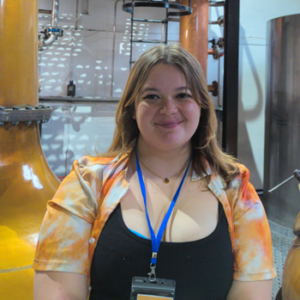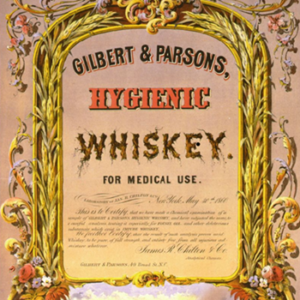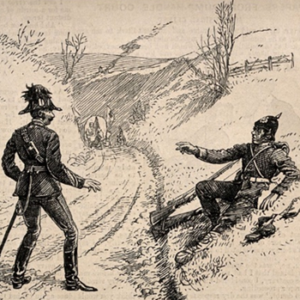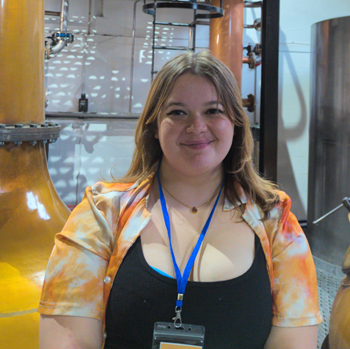Year 5 medical student, Sarah takes us on a journey through history as she ponders the use of alcohol as medicine.
“For wine is the most beneficial of beverages, the pleasantest of medicines, and the least cloying of appetizing things”
Plutarch (Greek philosopher), 46-119 AD
 Alcohol as medicine is not a foreign concept, albeit something that has fallen out of vogue with the NICE guidelines. Despite this, even today grannies still testify to a little bit of whisky to see off the end of a cold, and a cold pint has the ability to perk up even the most heartbroken of friends. Obviously, I would never prescribe alcohol to a patient, or even recommend it, but even I’ll admit, my Jonnie Walker did seem to improve the flu that struck me down bad a few years ago.
Alcohol as medicine is not a foreign concept, albeit something that has fallen out of vogue with the NICE guidelines. Despite this, even today grannies still testify to a little bit of whisky to see off the end of a cold, and a cold pint has the ability to perk up even the most heartbroken of friends. Obviously, I would never prescribe alcohol to a patient, or even recommend it, but even I’ll admit, my Jonnie Walker did seem to improve the flu that struck me down bad a few years ago.
Pondering this over a glass of wine, I wondered how exactly did we get here, and how did these beliefs surrounding alcohol come to fruition? After an afternoon of library scrounging (fantastic use of medical school resources, I know), I want to transport you back to 1895 and discuss the cutting edge medical literature of the time from the American Medical Association, specifically an article written by Dr J. H. Stallard, entitled “The Practical Importance of Well-Established Facts in Therapeutics” in which the aforementioned details his experience of using alcohol as a “tonic and restorative”.
“His first point of proof is that after having climbed to a height of 10,000 feet one morning, he took a hearty breakfast and, after only an hour’s rest, began his return when the “heat was intense” and over glacier ice “as irregular and uncertain as on board of a ship.” What is not singular, the intense heat, the presence of undigested food in his stomach, with the excitement of his unusual walk brought on extreme irritability of the pneumogastric and whole vasomotor system of nerves, indicated by excessive vomiting renewed at every attempt to proceed. In this dilemma, after his digestive organs had been emptied of their contents and the “intense heat” of midday had somewhat subsided, he was given a full dose of brandy which, by its true anaesthetic effect, so far lessened the excitability of his cerebral and pneumogastric nerve cells that he was enabled to resume and complete his journey under the impression that he had on “a pair of brandy boots.”
I’ll give it to him; this is one of the best descriptions I have ever read of someone getting an icky tummy. His use of brandy to complete his walk after his chunder is somewhat impressive, bringing a new meaning to “one for the road”. However, I would argue that alcohol aiding digestion is an allegory still pertinent in our society now. His use of brandy to calm his stomach points to the classic pre or post dinner drink: “the aperitif”, still very much drunken today. As proof, ask if anyone who likes to engage in a little cocktail before their meal, or perhaps an Irish coffee after. I mean have you ever tried a negroni? Its flavours could be mistaken for a Victorian health elixir- large tasting notes of Calpol and turpentine. Whereas many people nowadays may not drink them as a means of aiding digestion, their metaphorical name still very much remains, and many people still enjoy the tradition of this little treat.
“Your correspondent’s second point of proof is, the fact that at about the age of 62 years he had a sharp attack of pneumonia, took half ounce doses of brandy or whisky every two hours for nine days and his recovery was perfect.”

Growing up I would often find my mother making herself a hot toddy (whisky, lemon juice, honey and boiling water) when she was feeling under the weather. She would make me one- sans whisky- when I wasn’t feeling myself as well. Together we would sip our respective potions and engage in competitive whinging about our respective snotty noses- but without great avail I would always end up feeling better.
So even 130 years later we weren’t so different from Dr Stallard, taking a wee nip of something or other to help aid our recoveries. In my instance the alcohol was not the forefront, but a large part of a symbolically kind gesture of a mother wanting her child to feel better. In this way I will always associate whisky a little bit with feeling better as it reminds me of my mum, keen to take care of me, in a way she learnt from the generations of stoic Scottish woman before her. Maybe a whisky or a brandy reminded Stallard of his mum as well, and the fond memories always left him feeling a little better. I guess we will never know.
“The third point of proof implied by the personal history of your correspondent is that he has attained the age of 74 years still in good health, though he has drunk wine every day for over fifty years and as little water as possible”

This quote reminds me of my old job in a whisky pub on the royal mile. You would see the same men, day in, day out, coming for a pint or dram after their work. They loved to banter loudly and reminisce stories of better times to anyone who would listen. I was largely unsympathetic at the time, a bored 20-year-old who just wanted money so she herself could drink with friends after work. Now I’m not saying that the alcohol helped their health, but I do believe that those men who propped up my bar were almost better for coming in. Loneliness kills when you’re a 62-year-old man, and if I’m still able to drink wine with my friends at that age, I’ll have done something right.
So, what’s the lesson then? We should encourage everyone with HAP to just simply get down the pub and get some beers in them? Well, it’s certainly not- I really shouldn’t have to tell you that you are reading this article in a medical school magazine. Dr Stallard’s medicalisation of alcohol is something that gladly doesn’t really hold up today- but enjoying traditions, reminding yourself of family memories and being able to bond with people- those are bound to improve your wellbeing. If you can enjoy a whisky or two in moderation, and it puts a smile on your face, I say what’s the harm? At the end of the day, life is meant to be enjoyed.
Cheers!



